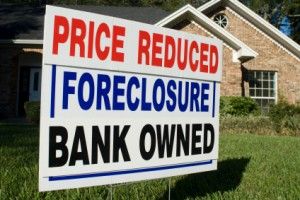396,345 Jobs Lost if Property Tax Split
By WAYNE LUSVARDI
The Davenport School of Public Policy at Pepperdine University is out with a blockbuster new study on the affects of the proposed elimination of caps on commercial property taxes provided for under Proposition 13. The study is titled, “An Analysis of Split Roll Property Tax Issues and Impacts.”
This is also called a “Split Roll” property tax because residential and commercial property taxation would be separated and the base assessed values would be taxed differently, although the tax rate would stay the same. Residential properties would keep their Prop. 13 property tax protections and such protections would be eliminated on commercial and industrial properties.
The study concludes that a split roll property tax would:
* End up losing 396,345 jobs over the first five years of a new split-roll property tax system. This would increase the current unemployment rate of 10.9 percent to 13.1 percent.
* The lost economic output would be $71.8 billion over five years. In other words, ending Prop 13 protections on commercial properties would result in losing about $14.4 billion in economic productivity per year to get about $3 to $8 billion annually in new property taxes. Stated differently, the private economy would shrink and government would grow.
* Government property tax revenues would be susceptible to greater instability – the ups and downs of tax revenues — as commercial and industrial property values are affected by the swings and cycles of the larger economy. This is especially so for retail commercial properties such as shopping centers.
Apartment Rents Up
* Apartment rents would have to be increased to comply with the increased commercial property tax rates. Renters — who comprise disproportionately more of those affected by the economic recession — would be hard hit with rent increases. Homeowners would still enjoy the protections of Prop. 13 on any increase in property taxes until their property re-sold. But then it would be the new buyers who would assume the higher tax burden. This could increase “tax flight.”
* Small commercial property owners who do not have “triple net” leases with their tenants would have to disproportionately absorb the property tax increase. Those large commercial landlords — shopping centers, malls and gas stations — could pass their property tax increase along to their tenants under a “triple net” lease. So, contrary to the stereotype created by tax advocates, “Big Commercial” landlords would be least affected and small commercial property owners would be clobbered.
This could result in “fire sales” of some small commercial properties. In 1978, before Prop. 13 was enacted, it was “widows” who had to sell their homes to pay property tax increases. In 2013, it might be small landlords renting to “Mom and Pop” stores and owners of duplexes who would be more susceptible to having to sell their properties to pay property tax increases.
This also likely would adversely affect the trustees/heirs of those commercial properties held in family trusts.
No Quick Reassessments
I would add one thing to the study: According to tax assessors, it would take about three years for local county assessors to hire and train new staff and begin to undertake the reassessment of commercial properties. So there is no “quick fix” for public school or county budgets dealing with prison realignment in a split-roll property tax. Commercial properties cannot be valued by mathematical computer formulas as can single family residential properties (such as using Zillow.com).
The Pepperdine study responded to criticisms of Prop. 13, such as May 2010 report by the California Tax Reform Association titled, “System Failure: California’s Loophole-Ridden Commercial Property Tax”. In that report, several high-profile commercial properties — such as Disneyland, high-end shopping malls and gas stations — were branded as being under-taxed due to vague “loopholes.”
But these alleged loopholes only apply to a small number of commercial property sales transactions of “internal sales” between partners, where commercial properties are owned by a partnership. Presently, the courts have rules these “loopholes” legal.
However, the Pepperdine study indicated it won’t be high-profile commercial properties or partnership-owned commercial properties that would be most affected. Instead it would “Mom and Pop” stores renting space in Class B strip malls, older commercial buildings or owners of residential duplexes and small six-unit apartments.
Related Articles
Special Series: California counties are more at risk of going belly up
Editor’s Note: This is the fifth in a CalWatchDog.com Special Series of 12 in-depth articles on municipal bankruptcy. April 11,
$700K State Salaries Bust Budget
JUNE 6, 2011 He’s not a Nobel Prize-winning physician. He’s not the founder of a life science company. He’s not
Community colleges oversell 0.7% enrollment decline
Feb. 26, 2010 By ELISE VIEBECK The chancellor for California’s community colleges lamented a 0.7% decline in the system’s enrollment



